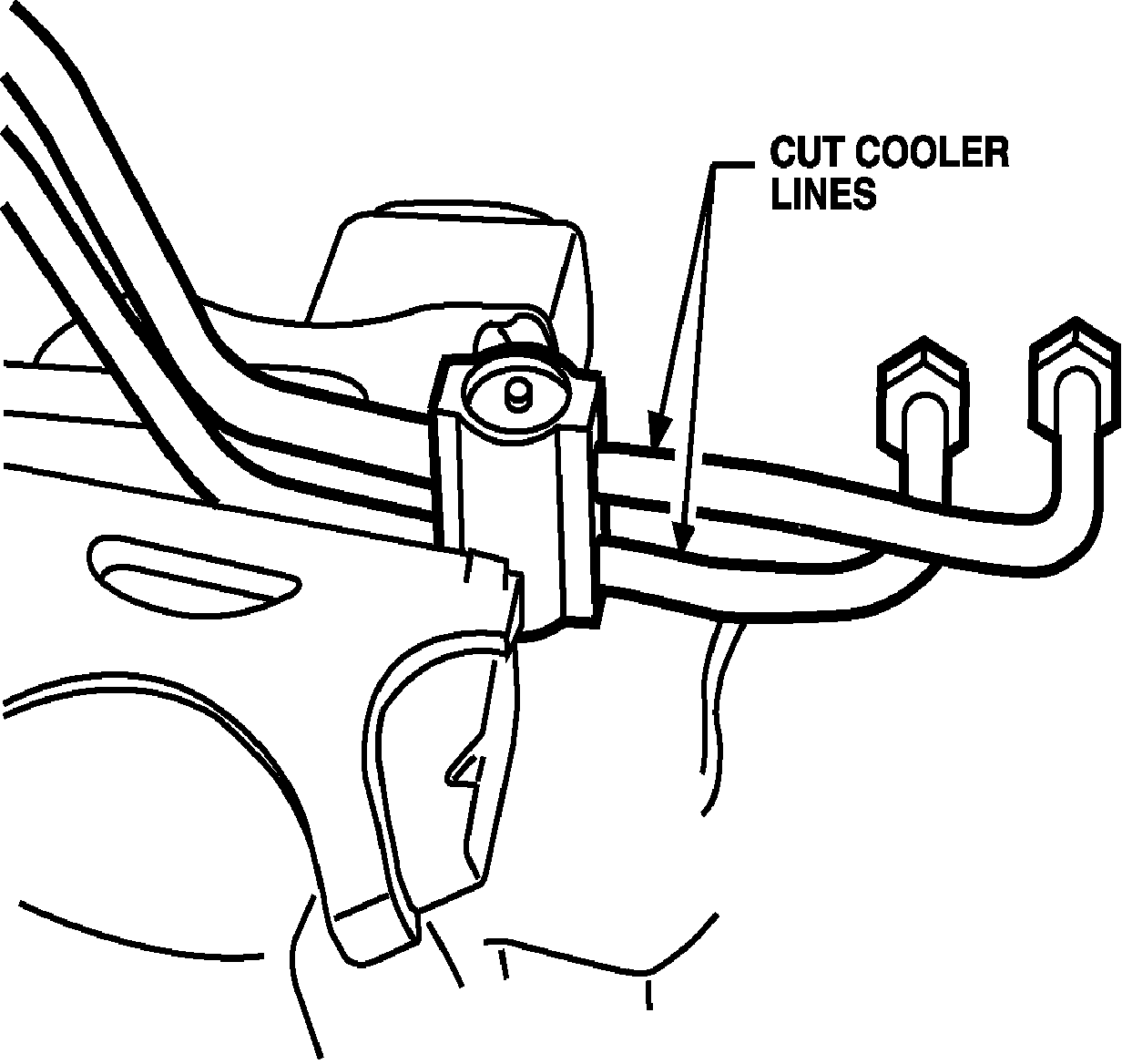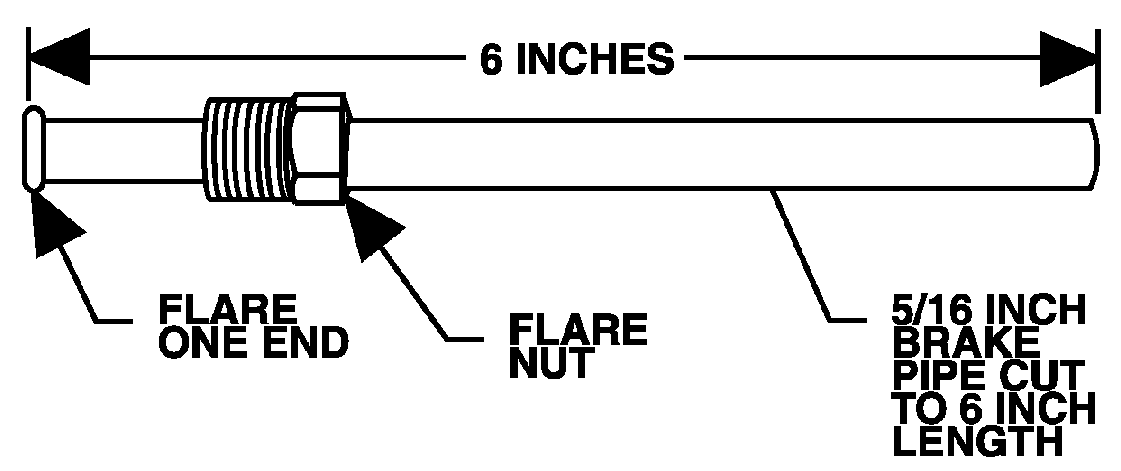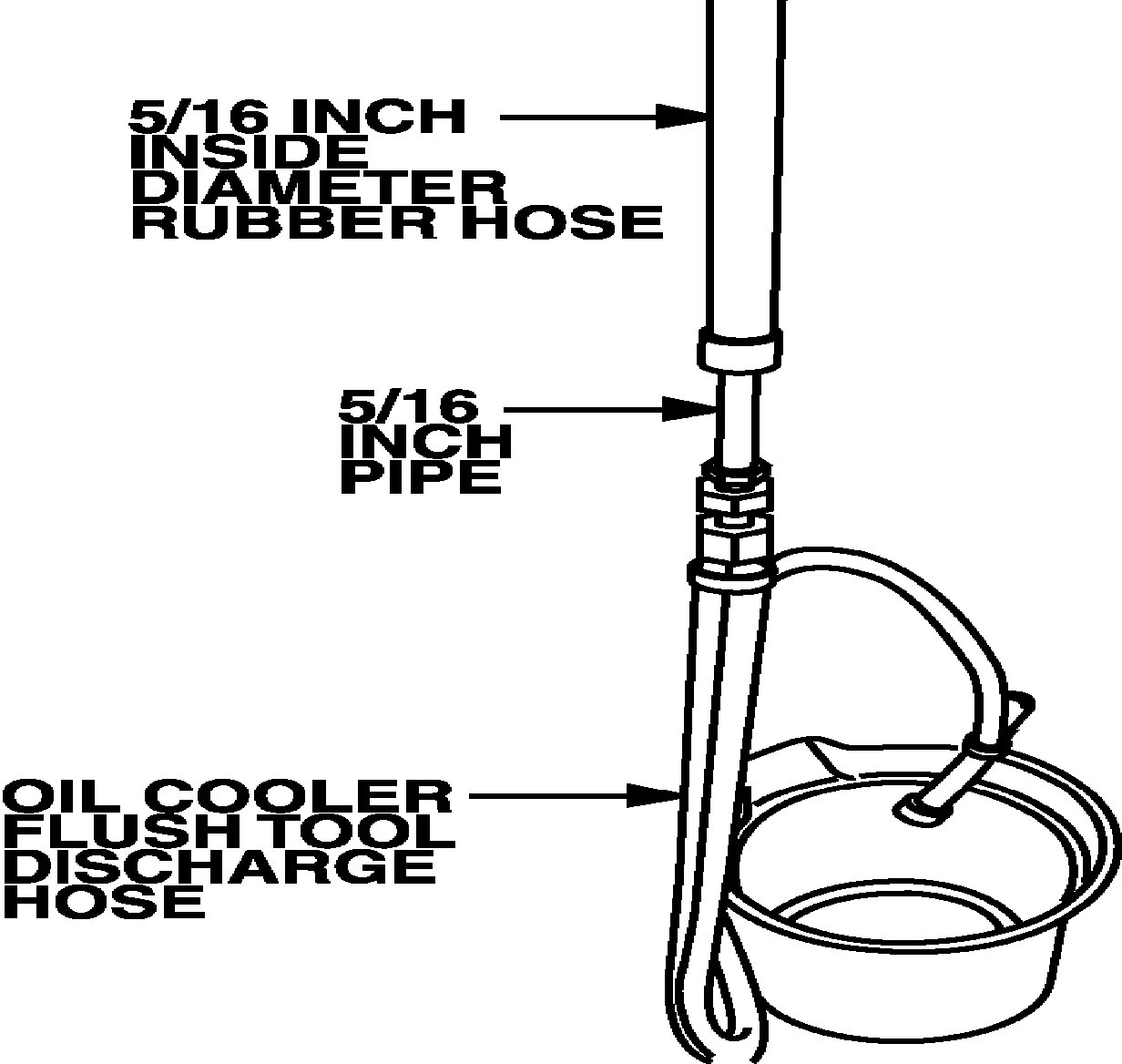Tools Required
SA9165T Oil Line Cooler Flusher
The transaxle oil cooler and lines should be flushed in any of the following situations:
| • | Transaxle Replacement |
| • | Transaxle Oil Cooler Replacement |
| • | Any internal transmission failure that caused debris to enter the transmission oil cooler and oil cooler lines, such as clutch plate material or metal shavings. |
Flushing Procedure
- Position the vehicle on hoist and raise. Refer to Lifting and Jacking the Vehicle.
- Drain the transaxle fluid. Refer to Transmission Fluid Replacement.
- Remove the transaxle oil cooler lines from the transaxle and oil cooler.
- Install the oil cooler lines into a vise and cut the two lines.
- Discard the transaxle end of the oil cooler line assembly.
- Cut two 6 in (15.22 cm) pieces of 5/16 in (0.79 cm) outside diameter brake pipe.
- Install a 6 in (15.24 cm) piece of 5/16 in (0.79 cm) inside the diameter rubber hose to the cut end of each cooler line and secure with hose clamps.
- Flare one end of each piece of cut brake pipe.
- Install a flare nut over each piece of cut brake pipe.
- Slide end of rubber hose connected to the oil cooler line over non-flared end of cut brake pipe. Secure with hose clamp.
- Perform the same procedure for the second piece of hose/cooler line combination and cut brake pipe.
- Using J-35944-13 Measuring Cup, fill the oil cooler flush tool tank with 21 oz (621 ml) of Kentmoore® J-35944-22 Biodegradable Flushing Fluid.
- Secure cap on tank and pressurize tank with shop air to 551-827 kPa (80-120 psi).
- Attach discharge hose to oil cooler pipe assembly that connects to top fitting of oil cooler.
- Hang tool under the vehicle and attach the pressure hose from flushing tool to remaining oil cooler pipe assembly.
- With water valve off, attach water hose to water supply (hot water if available). Turn on water supply.
- Turn water valve located on the cooler flushing tank ON to flow water through the oil cooler for 10 seconds.
- Depress the trigger on the cooler flushing tank, slide holding clip over trigger and flush the cooler for two minutes.
- After flushing for 2 minutes, turn water valve on flushing tool OFF and release trigger.
- Swap connections at the tool flare fittings, attaching the discharge hose to the lower cooler fitting and the pressure hose to the upper cooler fittings.
- Repeat steps 17 and 18.
- After flushing for two minutes, release trigger and allow water to flow through the oil cooler assembly for 1 minute.
- Turn off water valve on flushing tool, and turn off main water supply.
- Attach air supply to air valve on the plumbing of the flushing tool (not the tank valve) and dry the system out with shop air for 2 full minutes or longer, if required.
- Install NEW oil cooler lines P/N 22699445 to the oil cooler and transaxle.
- Add transaxle fluid and check the level . Refer to Transmission Fluid Check.

The cooler end of the oil cooler lines will be used in later steps.

Important: A 5/16 in (0.79 cm) outside diameter brake pipe must be obtained from a local parts supplier to perform the cooler flush procedure.
Important: To aid in sliding the smaller diameter hose over the cooler line pipes, lubricate the oil cooler lines with liquid soap.

Clip opposite end to an approved container.
Important: If water does not flow through oil cooler, it is completely plugged and must be replaced.
While flushing the cooler, attach an air supply to the air valve on the plumbing of the flushing tool for 5 seconds at 15-20 second intervals to create a surging action to help clean the oil cooler.
System is dry when no more moisture is visible in or leaving the discharge hose.
Important: Debris may still be trapped within the bypass valve of the cooler lines. Replace the cooler lines any time a transaxle is replaced or repaired for a condition that may generate debris from internal damage.
